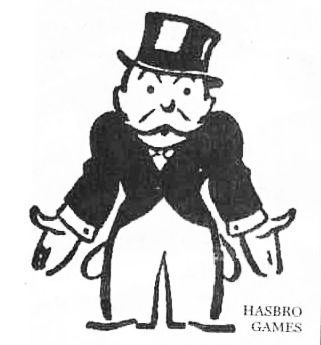

As this late 2010 article predicted, 2011 was indeed a year for mergers. The most noteworthy was AT&T’s attempt to buy T-Mobile. The attempted move by AT&T would have given them an estimated 43% of the market share for cellular phone providers. This number drew the ire of United States regulators which eventually landed AT&T in court where they are still negotiating. So much for efficiency. With all the hullabaloo over the potential merger, it’s worthwhile to examine the issue of monopoly as we head into 2012.
The Justice Department uses a metric called the Herfindahl-Hirschman Index to determine market shares for individual firms. When the concentration reaches a certain (arbitrarily determined) level, the offending firm is reminded of who is really in charge. Despite the fears of government officials and even many ignorant consumers, there are many reasons why it is difficult to identify monopolies, and why they are not to be feared.
- Antitrust legislation is based on a Neoclassical model of economics called “perfect competition.” This is a highly stylized model that makes several unrealistic assumptions about the real world. These include perfect knowledge of market conditions by all market participants, inability of any firm to affect the price, and the homogeneity of all goods (no substitutes). It is impossible to find a market with exactly these characteristics, but antitrust law is designed to “push” the market towards this “ideal.”
- There is no good way to define “monopoly.” If we define it as a single seller of a good, then every individual becomes a “monopolist” of his labor services.
![monopoly The Monopoly Bogeyman]()
- These two foundational problems lead to a host of others. For one, we cannot compare the “monopoly price” to the “perfectly competitive” because the latter is a fiction that exists only in economic models, not the real world of ever-changing markets.
- Every firm restricts output (with a resultant increase in price). To not restrict output would imply that all factors of production are producing as much as they can 24/7. This is obviously unrealistic, but it’s impossible to distinguish a firm that is restricting output under normal market operations, and one that is doing so with the “malicious” intent to increase price.
- Monopolists cannot earn profits in the long-run. If a firm finds itself a single seller of a good, it will bid up the prices of the factors of production used to produce that product so that its monopoly profits are dissipated.
- The restriction of output frees up resources for other firms to use. Just as one firm is increasing prices by restricting its output, factors of production can now be employed by other firms who are expanding output and decreasing price.
- Antitrust laws constrain actual competition in the name of perfect competition. How do entrepreneurs make a profit? They do so by satisfying the preferences of consumers more effectively than any other rival entrepreneurs. Thus, antitrust laws effectually punish the most efficient entrepreneurs all in the name of a fictitious ideal (perfect competition).
- The monopolist is still constrained by demand. No matter how inelastic the demand for a good, there is still a price that will actually decrease revenues to the firm. If nothing else, this is simply a function of finite incomes. The firm must price its product below this price to maximize its profit.
- Antitrust is usually imposed to help less efficient firms instead of consumers. Cases against Standard Oil, Paramount, and Microsoft were all brought by less efficient, rival competitors. Antitrust legislation is an effective way for inefficient firms who can’t make it on the market to compete.
- Economist Dominick Armentano examined the 55 most noteworthy antitrust cases in United States history. In each case, the firms accused of monopolistic behavior were lowering price, expanding output, and innovating. For a more detailed analysis, see Dominick Armentano’s book Antitrust and Monopoly: Anatomy of a Policy Failure.
- With government barriers to entry, high profit margins will attract additional firms into the industry. Even the threat of additional entrants is usually sufficient impetus for monopolistic firms to reduce the price of their products.
Given these (and other) reasons, mergers should not be feared. A merger is simply an instance of entrepreneurs discovering more efficient ways to configure productive processes. The goal is to maximize profit, but this can only be done by satisfying the preferences of consumers.
Thanks for reading. The Monopoly Bogeyman is a post from Hans Economics



















